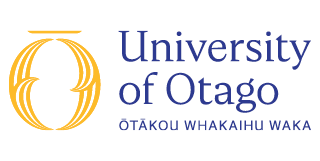Computer programs that produce, manipulate, and understand images and video have a vast range of applications. These include games and entertainment; robotic navigation and artificial intelligence; culture and heritage preservation; and medical diagnosis and treatment. Each year this paper explores a few of the key techniques in the field and their applications to current research in the department.
About this paper
| Paper title | Computer Vision and Graphics |
|---|---|
| Subject | Computer Science |
| EFTS | 0.1667 |
| Points | 20 points |
| Teaching period | Semester 1 (On campus) |
| Domestic Tuition Fees ( NZD ) | $1,448.79 |
| International Tuition Fees | Tuition Fees for international students are elsewhere on this website. |
- Eligibility
- There are no formal prerequisites for the 400-level papers, but prior knowledge is assumed. Admission to these papers is restricted not only by numbers, but by satisfactory grades in 300-level COSC papers.
- Contact
- Computer Science Adviser
- More information link
- View more information about COSC 450
- Teaching staff
Lecturers: Dr Steven Mills
Dr Stefanie Zollmann- Paper Structure
This paper examines a range of topics in the related fields of image processing, computer vision and computer graphics. These three fields all relate to images and the processing and construction of images in computer programs. One way to think about the difference between the fields is in terms of input and output:
- Image processing takes images as input and produces images as output
- Computer vision takes images as input and produces abstract models as output
- Computer graphics takes an abstract model as input and produces images as output
However, the lines between these areas are blurry at best, and many techniques are common between them.
Example paper topics (may change from year to year):
- Panoramic image stitching
- Motion tracking
- Animation principles
- Advanced rendering techniques
- Stereo geometry and structure from motion
- Procedural model generation
- Augmented and virtual reality
Assessment:
- Internal Assessment 40%
- Final Examination 60%
- Teaching Arrangements
- There is one 2-hour lecture per week.
- Textbooks
Textbooks are not required for this paper.
Resources are listed on the paper's Blackboard page.- Graduate Attributes Emphasised
- Interdisciplinary perspective, Lifelong learning, Scholarship, Research, Self-motivation.
View more information about Otago's graduate attributes. - Learning Outcomes
Students who successfully complete this paper will:
- Gain an in-depth understanding of a selection of current research topics in Computer Vision and Graphics
- Understand the core algorithms and techniques related to each of these topics, including an appreciation of the relative strengths and weaknesses of different approaches
- Implement these algorithms, making appropriate use of current tools and libraries
- Demonstrate an understanding of the underlying mathematical foundations of the subject and how this theory relates to the practical application of key techniques in vision and graphics
